#Indigenous education
Explore tagged Tumblr posts
Text
#indigenous justice#indigenous#indigineous people#indigenous women#indigenous wisdom#indigenous writer#indigenous education#indigenous rights#indigenous russia#indigenous resistance#indigenous representation#indigenous tribes#indigenous tumblr#indigenous tag#indigenous traditions#indigenous issues#indigenous oc#indigenous peoples#indigenous people's day#indigenous pride#indigenous poetry#indigenous plants#indigenous art#indigenous american#boycott pepsi#indigenous authors#indigenous activism#indigenous australia#indigenous sovereignty#indigenous solidarity
8 notes
·
View notes
Text
“If you aren’t at least -insert percentage- indigenous you can’t say you’re indigenous”
Shut up forever and stop re-enforcing the exact shit colonizers wanted to happen to indigenous people!!! They WANTED to thin us out so they could separate us from each other and our identities and culture as much as possible! Don’t fucking help them do that! Same with if you treat indigenous people who are disconnected from or know very little about their heritage and/or culture as less indigenous or not indigenous at all! This was done to us on purpose, you are spreading the exact same mindset and wishes of colonists!
#non indigenous folks don't fucking clown#idc what you have to say if you aren't indigenous yourself#indigenous#indigenous rights#indigenous issues#indigenous identity#indigenous education#indigenous recognition#colonialism#colonization#decolonisation#decolonization#decolonize#native american#indigenous woman#indigenous people#racism
85 notes
·
View notes
Text
What does it mean when a university values a tribe’s knowledge, intelligence, and culture – to the extent of preserving its baskets, songs, and human remains – but it will not admit or enroll the descendants of these tribes?
– Theresa Stewart-Ambo (Tongva). (2021, June). “We can do better”: University leaders speak to tribal-university relationships. American Educational Research Journal, 58(3), 459-491.
#community-campus engagement#tribal-university relationships#Indigenous education#higher education#quotes#theresa stewart-ambo#cultural context
2 notes
·
View notes
Text
In honor of the holiday season I encourage you to donate to The National Indigenous Resource Center, whose mission is to end violence against Native women. NIWRC provides educational resources and policy development for tribal nations. If you can, take the time to read from their resource library and learn more about the cause! Happy holidays!
https://www.niwrc.org/donate
4 notes
·
View notes
Text
Our Common Ground

From Natural Curiosity, 2nd Edition, by Doug Anderson, Julie Comay, and Lorraine Chiarotto (pg. 9)
“Perhaps what is needed is a ‘reconciliation pedagogy,’ a recovery of relationships, an encounter that brings all of us together as co-creators of our children’s survival.”
#teacher stuff#Indigenous Education#Inquiry learning#my winter break teacher homework made me cry in public
9 notes
·
View notes
Text
Honoring Indigenous Peoples Day: Celebrating Culture, History, and Resilience
Celebrate Indigenous Peoples Day by honoring the cultures, histories, and contributions of Indigenous peoples across the world. Discover meaningful ways to observe the day, from learning about Indigenous cultures to supporting Indigenous-led initiatives.
Indigenous Peoples Day, celebrated on August 9th, is a day dedicated to honoring the rich cultures, histories, and contributions of Indigenous peoples across the Americas. This day serves as a powerful reminder of the resilience and strength of Indigenous communities, while also acknowledging the injustices they have faced and continue to face. As we celebrate Indigenous Peoples Day, it’s an…
#Allyship#cultural heritage#Indigenous Advocacy#Indigenous Culture#Indigenous Education#Indigenous Peoples Day#Indigenous Rights#Land Acknowledgment#Native American History#social justice
2 notes
·
View notes
Text
#Community Empowerment#Cultural Preservation#Economic Development#Educational Disparities#Educational Infrastructure#facts#Federal Funding#Grassroots Advocacy#Higher Education Inequality#Indigenous Education#Language Revitalization#life#Native American Rights#Podcast#Policy Reform#serious#straight forward#TCUs (Tribal Colleges and Universities)#Tribal Colleges#truth#upfront#website
0 notes
Text
Breaking Barriers: Supporting Youth Mental Health in Schools
Introduction: Why Mental Health in Schools Matters
Imagine a high school student sitting at their desk, trying to focus as waves of anxiety crash over them. They’re not alone. Recent studies reveal that nearly 1 in 5 students experiences mental health challenges such as anxiety or depression, with these issues worsening in the wake of the pandemic (Centers for Disease Control and Prevention [CDC], 2022).
Schools are more than academic institutions—they are environments where students develop socially and emotionally. Yet many educational systems fail to address the pressing issue of mental health. This blog explores systemic barriers, highlights potential solutions, and emphasizes the importance of creating supportive school environments, especially for marginalized populations.

The Impact of Mental Health on Education
Mental health challenges are deeply intertwined with a student’s ability to succeed in school, both academically and socially.
Academic Consequences:
Students with untreated mental health challenges often experience difficulty concentrating, increased absenteeism, and declining grades.
Statistic: Over 50% of students with significant mental health challenges drop out of high school (National Alliance on Mental Illness [NAMI], 2023).
Social Consequences:
Anxiety and depression strain peer relationships, leading to isolation and low self-esteem.
Marginalized groups, such as Indigenous youth, face compounded struggles due to systemic inequities and cultural disconnection (Sabzalian, 2018).
Sabzalian’s (2018) concept of "survivance" captures the resilience of Indigenous students navigating educational systems that often fail to support their cultural identities. For these students, the mental health crisis exacerbates feelings of exclusion, making targeted interventions crucial.
Barriers to Addressing Mental Health in Schools
Despite the growing awareness of youth mental health, several systemic barriers prevent schools from offering effective support:
1. Resource Limitations:
Many schools lack funding to hire counselors, psychologists, and other professionals.
Statistic: Only 22% of schools meet the recommended student-to-counselor ratio of 250:1 (American School Counselor Association [ASCA], 2023).
2. Cultural Insensitivity:
Indigenous and marginalized students often encounter mental health programs that fail to address their unique cultural needs, limiting the effectiveness of these initiatives (Sabzalian, 2018).
3. Stigma Surrounding Mental Health:
Cultural stigma, especially in underserved communities, discourages students from seeking help and families from discussing mental health challenges.
4. Insufficient Training for Educators:
Teachers are often unprepared to recognize signs of mental health struggles, leaving many students unsupported.
These barriers demand systemic reform to ensure schools are prepared to address the diverse needs of their students.
Real Stories: The Power of Sharing Experiences
To understand the real-world impact of these barriers, the PBS documentary "Kids in Crisis: You’re Not Alone" provides a powerful lens. Through the journeys of four teens, this documentary highlights the struggles of youth dealing with anxiety, depression, and systemic challenges in seeking help.
Their stories emphasize the urgent need for schools to provide culturally relevant, accessible, and stigma-free mental health support.
Solutions: What Schools Can Do
There are actionable steps schools can take to better support students’ mental health:
1. Expand Access to Mental Health Professionals:
Schools must hire more counselors, social workers, and psychologists to meet recommended ratios and provide consistent support.
2. Integrate Mental Health Literacy into Curricula:
Embedding mental health education normalizes discussions and empowers students to seek help when needed.
3. Provide Culturally Relevant Support Systems:
Schools should adopt frameworks that respect and reflect the cultural identities of students.
Example: Sabzalian (2018) highlights the need for incorporating Indigenous perspectives into school programs.
4. Foster Creativity and Play:
Drawing from Aronstein & Finke (2018), schools can integrate creative approaches to reduce stress and foster engagement, making classrooms more inclusive and supportive.
5. Train Educators to Recognize Early Signs of Mental Health Struggles:
Professional development programs can equip teachers with the skills to identify and respond to students’ needs effectively.
Call to Action: Together, We Can Make a Difference
Mental health is as essential as academic success. Schools, families, and communities must work together to create environments where every student feels supported.

What You Can Do:
Advocate for policies that fund mental health programs in schools.
Support local organizations that offer culturally relevant resources.
Start conversations to reduce stigma and encourage open discussions about mental health.
By addressing these challenges, we can ensure that schools become places where students can thrive academically, socially, and emotionally.
References
Sabzalian, L. (2018). Chapter 2: Indigenous children’s survivance in public school.
Aronstein, S., & Finke, P. (2018). Discipline and pleasure: The pedagogical work of Disneyland.
National Alliance on Mental Illness. (2023). Mental health facts: Children and teens. Retrieved from https://www.nami.org
Centers for Disease Control and Prevention. (2022). Youth risk behavior survey data summary & trends report. Retrieved from https://www.cdc.gov
American School Counselor Association. (2023). The role of school counselors in supporting mental health. Retrieved from https://www.schoolcounselor.org
PBS. (2023). Kids in crisis: You’re not alone. Retrieved from https://www.pbs.org/show/kids-crisis-youre-not-alone/
Miller, A. L. (2019). Adolescent mental health in the classroom: A case study. The Journal of Adolescent Health, 64(3), 334-340.
#Youth Mental Health#Student Well-Being#Mental Health in Schools#Education and Mental Health#School Support Systems#Social-Emotional Learning (SEL)#Indigenous Education#Cultural Relevance in Schools#Mental Health Advocacy#Anxiety and Depression in Students#Barriers to Mental Health Access#Marginalized Youth#Survivance in Education#Creativity in Education
0 notes
Text
Opening of the Permanent Forum on Indigenous Issues (UNPFII 23)
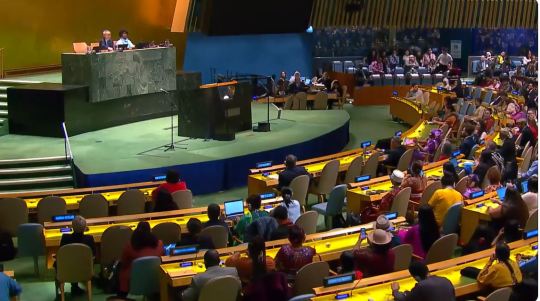
The twenty-third session of the UN Permanent Forum on Indigenous Issues (UNPFII) will take place in-person at UN Headquarters in New York from 15-26 April 2024. Theme: "Enhancing Indigenous Peoples' right to self-determination in the context of the United Nations Declaration on the Rights of Indigenous Peoples: emphasizing the voices of Indigenous youth" Opening of the session Item 1: Election of officers
Item 2: Adoption of the agenda and organization of work The United Nations Permanent Forum on Indigenous Issues (UNPFII) is a high- level advisory body to the Economic and Social Council.
The Forum was established on 28 July 2000 by resolution 2000/22, with the mandate to deal with indigenous issues related to economic and social development, culture, the environment, education, health and human rights.
#openingsession#sustainability#unpfii23#indigenousissues#Indigenous Education#Indigenous Health#indigenous culture#environmental issues#SocialIssues#webcast#right to self determination#permanent forum on indigenous issues#weareindigenous#everyoneincluded
0 notes
Text
Bond University offers micro-credential “Becoming Culturally Aware”
Australia Day is January 26, and as part of Bond University’s commitment to being a more inclusive and respectful organization that values diversity, all students (and staff) now have access to Bond’s free online micro-credential “Becoming Culturally Aware.”
Strengthen your cultural capability with this online micro-credential developed in partnership with the Yugambeh Regional Aboriginal Corporation Alliance (YRACA). Through a series of engaging and informative modules, you will gain a richer understanding of the vast history, customs, and cultural protocols of Aboriginal and Torres Strait Islander peoples, particularly the Yugambeh language people, and learn to deliver a meaningful Acknowledgement of Country.
Duration: 4 – 10 hours
Learn more here!
#study in australia#australian universities in australia#bond university#indigenous education#cultural heritage
0 notes
Text
Good News - June 15-21
Like these weekly compilations? Tip me at $Kaybarr1735! And if you tip me and give me a way to contact you, at the end of the month I'll send you a link to all of the articles I found but didn't use each week!
1. Victory for Same-Sex Marriage in Thailand
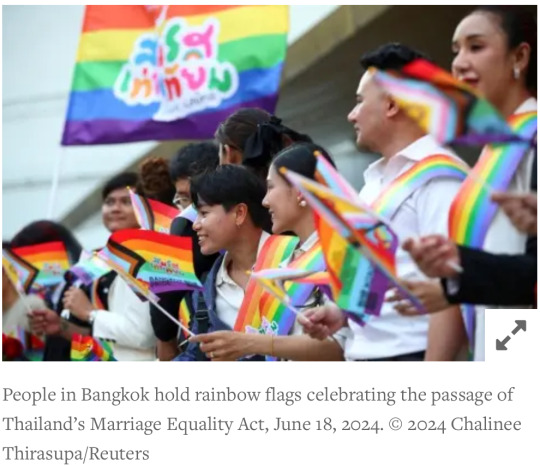
“Thailand’s Senate voted 130-4 today to pass a same-sex marriage bill that the lower house had approved by an overwhelming majority in March. This makes Thailand the first country in Southeast Asia, and the second in Asia, to recognize same-sex relationships. […] The Thai Marriage Equality Act […] will come into force 120 days after publication in the Royal Gazette. It will stand as an example of LGBT rights progress across the Asia-Pacific region and the world.”
2. One of world’s rarest cats no longer endangered
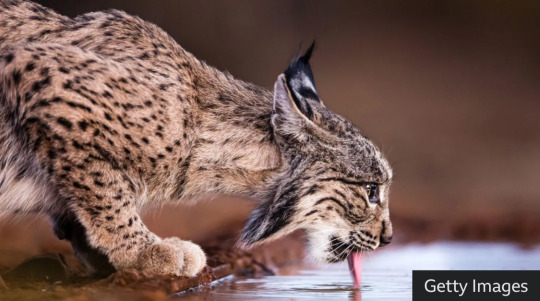
“[The Iberian lynx’s] population grew from 62 mature individuals in 2001 to 648 in 2022. While young and mature lynx combined now have an estimated population of more than 2,000, the IUCN reports. The increase is largely thanks to conservation efforts that have focused on increasing the abundance of its main food source - the also endangered wild rabbit, known as European rabbit. Programmes to free hundreds of captive lynxes and restoring scrublands and forests have also played an important role in ensuring the lynx is no longer endangered.”
3. Planning parenthood for incarcerated men
“[M]any incarcerated young men missed [sex-ed] classroom lessons due to truancy or incarceration. Their lack of knowledge about sexual health puts them at a lifelong disadvantage. De La Cruz [a health educator] will guide [incarcerated youths] in lessons about anatomy and pregnancy, birth control and sexually transmitted infections. He also explores healthy relationships and the pitfalls of toxic masculinity. […] Workshops cover healthy relationships, gender and sexuality, and sex trafficking.”
4. Peru puts endemic fog oasis under protection
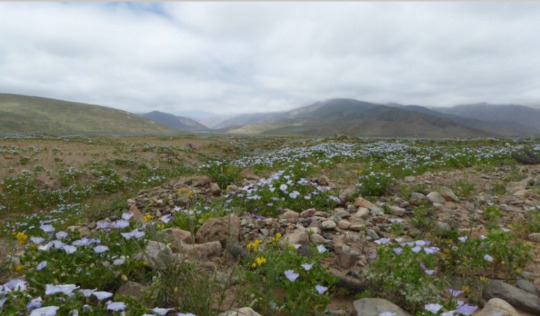
“Lomas are unique ecosystems relying on marine fog that host rare and endemic plants and animal species. […] The Peruvian government has formally granted conservation status to the 6,449-hectare (16,000-acre) desert oasis site[….] The site, the first of its kind to become protected after more than 15 years of scientific and advocacy efforts, will help scientists understand climatic and marine cycles in the area[, … and] will be protected for future research and exploration for at least three decades.”
5. Religious groups are protecting Pride events — upending the LGBTQ+ vs. faith narrative
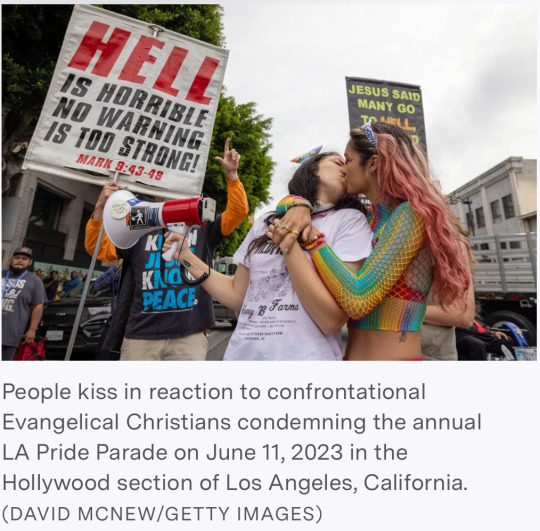
“In some cases, de-escalation teams stand as a physical barrier between protesters and event attendees. In other instances, they try to talk with protesters. The goal is generally to keep everyone safe. Leigh was learning that sometimes this didn’t mean acting as security, but doing actual outreach. That might mean making time and space to listen to hate speech. It might mean offering food or water. […] After undergoing Zoom trainings this spring, the members of some 120 faith organizations will fan out across more than 50 Pride events in 16 states to de-escalate the actions of extremist anti-LGBTQ+ hate groups.”
6. 25 years of research shows how to restore damaged rainforest
“For the first time, results from 25 years of work to rehabilitate fire-damaged and heavily logged rainforest are now being presented. The study fills a knowledge gap about the long-term effects of restoration and may become an important guide for future efforts to restore damaged ecosystems.”
7. Audubon and Grassroots Carbon Announce First-of-its-Kind Partnership to Reward Landowners for Improving Habitats for Birds while Building Healthy Soils
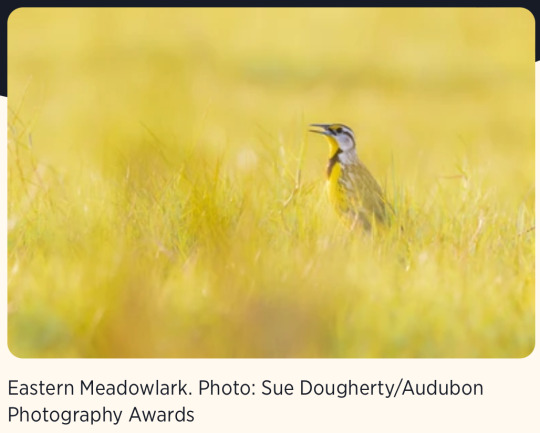
“Participating landowners can profit from additional soil carbon storage created through their regenerative land management practices. These practices restore grasslands, improve bird habits, build soil health and drive nature-based soil organic carbon drawdown through the healthy soils of farms and ranches. […] Additionally, regenerative land management practices improve habitats for birds. […] This partnership exemplifies how sustainable practices can drive positive environmental change while providing tangible economic benefits for landowners.”
8. Circular food systems found to dramatically reduce greenhouse gas emissions, require much less agricultural land
“Redesigning the European food system will reduce agricultural land by 44% while dramatically reducing greenhouse gas emissions from agriculture by 70%. This reduction is possible with the current consumption of animal protein. “Moreover, animals are recyclers in the system. They can recycle nutrients from human-inedible parts of the organic waste and by-products in the food system and convert them to valuable animal products," Simon says.”
9. Could Treating Injured Raptors Help Lift a Population? Researchers found the work of rehabbers can have long-lasting benefits
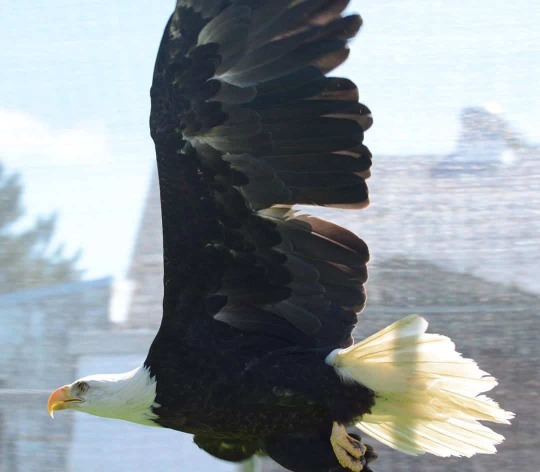
“[“Wildlife professionals”] tend to have a dismissive attitude toward addressing individual animal welfare,” [… but f]or most raptor species, they found, birds released after rehabilitation were about as likely to survive as wild birds. Those released birds can have even broader impacts on the population. Back in the wild, the birds mate and breed, raising hatchlings that grow up to mate and breed, too. When the researchers modeled the effects, they found most species would see at least some population-level benefits from returning raptors to the wild.”
10. Indigenous people in the Amazon are helping to build bridges & save primates

“Working together, the Reconecta Project and the Waimiri-Atroari Indigenous people build bridges that connect the forest canopy over the BR-174 road[….] In the first 10 months of monitoring, eight different species were documented — not only monkeys such as the golden-handed tamarin and the common squirrel monkey (Saimiri sciureus), but also kinkajous (Potos flavus), mouse opossums (Marmosops sp.), and opossums (Didelphis sp.).”
Bonus: A rare maneless zebra was born in the UK
June 8-14 news here | (all credit for images and written material can be found at the source linked; I don’t claim credit for anything but curating.)
#hopepunk#good news#lgbtq#gay rights#gay marriage#same sex marriage#thailand#lynx#big cats#cats#endangered species#endangered#sex education#prison#peru#conservation#habitat#religion#pride#faith#pride month#lgbt pride#compassion#rainforest#birds#nature#climate change#wildlife rehab#wildlife#indigenous
1K notes
·
View notes
Text
0 notes
Text
Indigenous Chemistry activity using native tree nuts
A wonderful activity exploring how Indigenous People used various chemical process to access a food source, aimed at Year 10 (ages 15/16).
It also includes a small reading task which includes differentiating 'chemical' and 'physical' processes as well as 'human benefits'.
And, as a special bonus, here's the research paper that the activity was based on
#science#year 10#year 10 science#Indigenous#Indigenous education#culturally appropriate teaching#culturally responsive teaching#chemistry#Indigenous knowledge#education#education resource#teaching#teaching resource
1 note
·
View note
Text
"In a historic move Friday [November 8, 2024], Sacramento State announced its new Native American College, a first of its kind in the California State university system.
The college, a co-curricular institution housed at Sacramento State, will support Native-based education with a focus on leadership and career building. It will offer a diverse range of programs that integrate "tribal values, traditions and community engagement," according to a press release.
This marks Sacramento State's second ethnic-based institution. The university launched the the nation's first Black Honors college earlier this year.
The announcement was made at the California State Capitol by President Luke Wood and Dr. Annette Reed, an enrolled member and citizen of the Tolowa Dee-ni' Nation, who will be the first dean of the Native American College.
Reed said students will have access to faculty mentors, advisors, outreach coordinators and more who have the expertise to work closely with Native American students and can support them holistically.
She hopes this historic initiative will address low enrollment of Native students pursuing higher education across the state and in the country. Native American students face significant barriers to enrolling in higher education, such as financial constraints, feelings of isolation, historical trauma and lack of culturally relevant curriculum.
"And so I'm hoping this impacts the students where they go through as a cohort. They can create networks, they can be able to have more of a support system going through and beginning together and hopefully graduating at the end together," Reed said.
Reed recalled taking her first class on Native American studies in 1980. She would later on serve as the director of Native American studies at Sacramento State and chair of the Department of Ethnic Studies. For her, advocating for Native American education was a natural top priority.
"People always ask me, 'What is Native American studies?' It is history. It is looking at culture. It's looking at teaching sovereignty, federal Indian law. It's teaching social work, art. It's teaching about Native cultural expression, it can be literature," Reed said.
The Native American College will introduce two new courses, according to Reed, which will be focused on Native American leadership.
"It means that maybe some of the ones that start in Fall 2025 will end up here at the Capitol. Maybe they'll end up being the future senators or assembly people or the future of people in business. They might be leading our nation as tribal chairs, they might be going into the medical field," Reed said. "But whatever field they go into, leadership is really key."
Students who want to be in the Native American College can apply after being accepted into the university's general application process. All students will be required to minor in Native American Studies, with an emphasis on Native American leadership."
-via ABC 10, November 8, 2024
#native american#indigenous#indigenous peoples#first nations#sacramento#california#united states#college#university#public education#public university#native american studies#education#education news#good news#hope
710 notes
·
View notes
Text
the quietest I have ever seen a group of kids is when I took a large group of chaotic, high-energy 7th graders who were previously running screaming around a dark parking lot hucking glow sticks at each other and gathered them around a campfire for another teacher to read a picture book to them, and explained that the story, the storyteller, and the story-listeners were all a part of the storytelling.
usually I hear (and have tried!) questions like "how can we be respectful of the storyteller?" or "how can we be a good audience?", which usually get the same responses: sit down & shut up. can't imagine why that's not super compelling to a kid!
but taking a moment to frame it as if the story is kind of alive, and the storyteller is bringing it in, and they, as listeners, are helping in that process... suddenly they got it.
it wasn't just "sit down and shut up", it was about how they can engage with the story while it's told: thinking about questions they can ask, connections to their own lives, how they feel about different parts, how the story is changing them, and what they're thinking about or imagining as they hear it.
and it was about how that's part of the story itself! it's important work, receiving a story. it's crucial, and it's active.
I just think about that a lot.
#it's not from my own brain either. i learned this from another workplace#to my understand that framing comes from NA indigenous culture but i was never told exactly where#or who brought it there specifically#education
173 notes
·
View notes
Text
About the entanglement of "science" and Empire. About geographic imaginaries. About how Empire appeals to and encourages children to participate in these scripts.
Was checking out this recent thing, from scavengedluxury's beloved series of posts looking at the archive of the Budapest Municipal Photography Company.
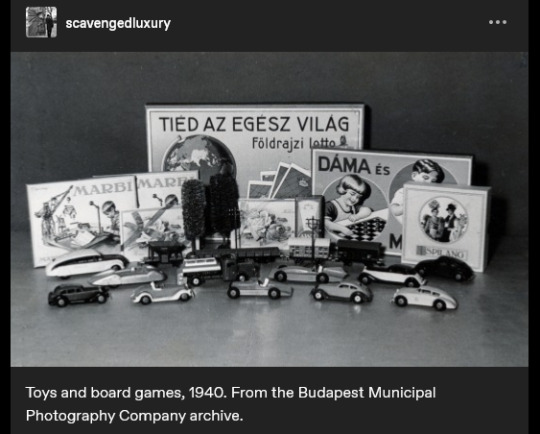
The caption reads: "Toys and board games, 1940."
And I think the text on the game-box in the back says something like "the whole world is yours", maybe?
(The use of appeals to science/progress in imperial narratives probably already well-known to many, especially for those familiar with Victorian era, Edwardian era, Gilded Age, early twentieth century, etc., in US and Europe.)
And was struck, because I had also recently gone looking through nemfrog's posts about the often-strange imagery of children's material in late nineteenth- and early twentieth-century US/Europe. And was disturbed/intrigued by this thing:
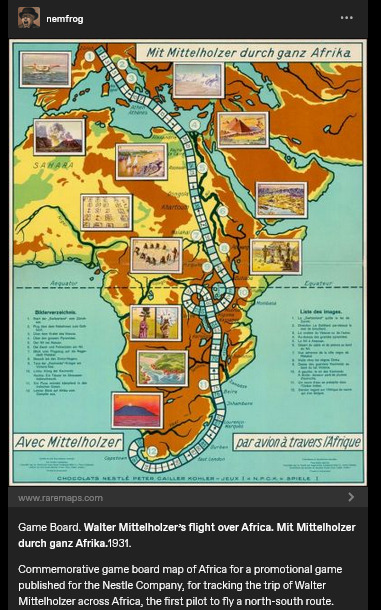
Caption here reads: "Game Board. Walter Mittelholzer's flight over Africa. [...] 1931. Commemorative game board map of Africa for a promotional game published for the N*stle Company, for tracking the trip of Walter Mittelholzer across Africa, the first pilot to fly a north-south route."
Hmm.
"Africa is for your consumption and pleasure! A special game celebrating German achievement, brought to you by the N*stle Company!"
1930s-era German national aspirations in Africa. A company which, in the preceding decade, had shifted focus to expand its cacao production (which would be dependent on tropical plantations). Adventure, excitement, knowledge, science, engineering prowess, etc. For kids!
Another, from a couple decades earlier, this time British.

Caption reads: "The "World's globe circler." A game board based on Nellie Bly's travels. 1890." At center, a trumpet, and a proclamation: "ALL RECORDS BROKEN".
Same year that the United States "closed the frontier" and conquered "the Wild West" (the massacre at Wounded Knee happened in December 1890). A couple years later, the US annexed Hawai'i; by decade's end, the US military was in both Cuba and the Philippines. The Scramble for Africa was taking place. At the time, Britain especially already had a culture of "travel writing" or "travel fiction" or whatever we want to call it, wherein domestic residents of the metropole back home could read about travel, tourism, expeditions, adventures, etc. on the peripheries of the Empire. Concurrent with the advent of popular novels, magazines, mass-market print media, etc. Intrepid explorers rescuing Indigenous peoples from their own backwardness. Many tales of exotic allure set in South Asia. Heroic white hunters taking down scary tigers. Elegant Englishwomen sipping tea in the shade of an umbrella, giggling at the elephants, the local customs, the strange sights. Orientalism, tropicality, othering.
I'd lately been looking at a lot of work on race/racism and imperative-of-empire in British scientific and pop-sci literature, especially involving South and Southeast Asia. (From scholars like Varun Sharma, Rohan Deb Roy, Ezra Rashkow, Jonathan Saha, Pratik Chakrabarti.) But I'd also lately been looking at Mashid Mayar's work, which I think closely suits this kinda thing with the board games. Some of her publications:
"From Tools to Toys: American Dissected Maps and Geographic Knowledge at the Turn of the Twentieth Century". In: Knowledge Landscapes North America, edited by Kloeckner et al., 2016.
"What on Earth! Slated Globes, School Geography and Imperial Pedagogy". European Journal of American Studies 16, number 3, Summer 2020.
Citizens and Rulers of the World: The American Child and the Cartographic Pedagogies of Empire, 2022.
Discussing her book, Mayar was interviewed by LA Review of Books in 2022. She says:
[Quote.] Growing up at the turn of the 20th century, for many American children, also meant learning to view the world through the lens of "home geography." [...] [T]hey inevitably responded to the transnational whims of an empire that had stretched its dominion across the globe [recent forays into Panama, Cuba, Hawai'i, the Philippines] [...]. [W]hite, well-to-do, literate American children [...] learned how to identify and imagine “homes” on the map of the world. [...] [T]he cognitive maps children developed, to which we have access through the scant archival records they left behind (i.e., geographical puzzles they designed and printed in juvenile periodicals) [...] mixed nativism and the logic of colonization with playful, appropriative scalar confusion, and an intimate, often unquestioned sense of belonging to the global expanse of an empire [...]. Dissected maps - that is, maps mounted on cardboard or wood and then cut into smaller pieces that children were to put back together - are a generative example of the ways imperial pedagogy [...] found its place outside formal education, in children's lives outside the classroom. [...] [W]ell before having been adopted as playthings in the United States, dissected maps had been designed to entertain and teach the children of King George III about the global spatial affairs of the British Empire. […] [J]uvenile periodicals of the time printed child-made geographical puzzles [...]. [I]t was their assumption that "(un)charted," non-American spaces (both inside and outside the national borders) sought legibility as potential homes, [...] and that, if they did not do so, they were bound to recede into ruin/"savagery," meaning that it would become the colonizers' responsibility/burden to "restore" them [...]. [E]mpires learn from and owe to childhood in their attempts at survival and growth over generations [...]. [These] "multigenerational power constellations" [...] survived, by making accessible pedagogical scripts that children of the white and wealthy could learn from and appropriate as times changed [...]. [End quote.] Source: Words of Mashid Mayar, as transcribed in an interviewed conducted and published by M. Buna. "Children's Maps of the American Empire: A Conversation with Mashid Mayar". LA Review of Books. 11 July 2022.
Some other stuff I was recently looking at, specifically about European (especially German) geographic imaginaries of globe-as-playground:
The Play World: Toys, Texts, and the Transatlantic German Childhood (Patricia Anne Simpson, 2020) /// "19th-Century Board Game Offers a Tour of the German Colonies" (Sarah Zabrodski, 2016) /// Advertising Empire: Race and Visual Culture in Imperial Germany (David Ciarlo, 2011) /// Learning Empire: Globalization and the German Quest for World Status, 1875-1919 (Erik Grimmer-Solem, 2019) /// “Ruling Africa: Science as Sovereignty in the German Colonial Empire and Its Aftermath” (Andrew Zimmerman. In: German Colonialism in a Global Age, 2014) /// "Exotic Education: Writing Empire for German Boys and Girls, 1884-1914". (Jeffrey Bowersox. In: German Colonialism and National Identity, 2017) /// Raising Germans in the Age of Empire: Youth and Colonial Culture, 1871-1914 (Jeff Bowersox, 2013) /// "[Translation:] (Educating Modernism: A Trade-Specific Portrait of the German Toy Industry in the Developing Mass-Market Society)" (Heike Hoffmann, PhD dissertation, Tubingen, 2000) /// Home and Harem: Nature, Gender, Empire, and the Cultures of Travel (Inderpal Grewal, 1996) /// "'Le rix d'Indochine' at the French Table: Representation of Food, Race and the Vietnamese in a Colonial-Era Board Game" (Elizabeth Collins, 2021) /// "The Beast in a Box: Playing with Empire in Early Nineteenth-Century Britain" (Romita Ray, 2006) /// Playing Oppression: The Legacy of Conquest and Empire in Colonialist Board Games (Mary Flanagan and Mikael Jakobsson, 2023)
#mashid mayar book is useful also the Playing Oppression book is open access online if you want#in her article on slated globes mayar also mentions how european maps by 1890s provoked a sort of replete homogenous filling in of globe#where european metropole thought of itself as having sufficiently mapped the planet by now knit into neat web of interimperial trade#and so european apparent knowledge of globe provided apparently enlightened position of educating or subjugating the masses#whereas US at time was more interested in remapping at their discretion#a thing which relates to what we were talking about in posts earlier today where elizabeth deloughrey describes twentieth century US#and its aerial photographic and satellite perspectives especially of Oceania and Pacific as if it now understood the totality of the planet#ecologies#tidalectics#geographic imaginaries#mashid mayar#indigenous pedagogies#black methodologies
140 notes
·
View notes